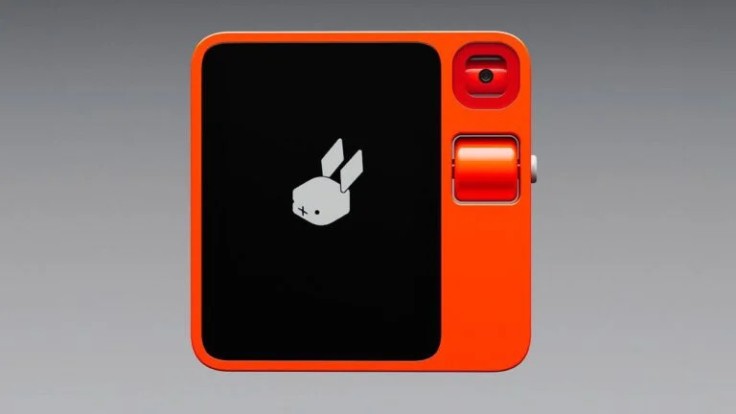
You likely have a virtual assistant on your phone and a smart speaker at home. However, the startup Rabbit believes there's room for improvement. Unlike traditional AI implementations, Rabbit envisions a world where conversations replace apps.
The Rabbit R1, their first device, aims to revolutionize the virtual assistant experience.
Boasting an adorable design in a vibrant orange hue, it features a 2.88-inch touchscreen, analog scroll wheel, two microphones, a speaker, and a "360-degree rotational eye" camera. This walkie-talkie-like AI device seeks to provide a more engaging and distraction-free interaction compared to conventional virtual assistants like Siri and Alexa. At CES 2024, Rabbits howcased its innovative approach to redefining how users engage with AI technology.
Push-to-Talk Interaction and Distinctive Design by Teenage Engineering
The Rabbit R1 AI showcased at CES 2024, introduces a unique interaction model featuring a "Push-to-Talk" button for user engagement. Rabbit OS, the underlying system, utilizes an innovative language model, allowing the AI to perform tasks through interfaces rather than traditional APIs or apps. This innovation enables many actions, from booking an Uber to generating images through user interface interactions.
The Rabbit R1, with its distinctive design, includes a rotating camera for privacy, capturing visuals only when summoned. In a demo, the AI accurately identifies and suggests a low-calorie recipe based on the contents of a refrigerator. The device's push-to-talk approach and versatile capabilities aim to redefine AI interactions.
According to another source, the Rabbit r1, featuring the design prowess of Teenage Engineering, stands out with a distinctive aesthetic inherited from the renowned Swedish company's music-creation devices. Emphasizing simplicity, the pocket AI device boasts a single push button, an analog scroll wheel, and a touch-enabled screen. Designed for user convenience, it aims to offer a straightforward experience.
While capable of handling standard queries, the Rabbit OS is also expected to integrate with various apps and services, although this aspect is still under development.
The device has garnered significant attention, evidenced by the rapid sell-out of its initial batch of 10,000 preorders at $199, reflecting the resonance of its concept and design among consumers. The device's true capabilities will be assessed upon the release of initial reviews.
Rabbit R1 uses a Large Action Model (LAM)
Rabbit adopts a unique approach by utilizing the Large Action Model (LAM), allowing its Rabbit OS to learn tasks through user interfaces instead of APIs or apps; unlike traditional AI-powered hardware that connects to chatbots.
Rabbit OS aims to serve as a comprehensive interface, comparable to ChatGPT's role in web search. While the Rabbit r1 is not designed to replace smartphones, it offers voice assistant capabilities, video calls, and SIM card support. Despite having a screen and camera, its multifunctional nature makes it more than a conventional voice assistant.
The Rabbit OS prioritizes security and privacy, even though users login to their frequently used services through its interface. Available for preorder, the Rabbit r1 is expected to ship in March, potentially preceding the Humane AI Pin to market.
Related Article: Rabbit R1: Pocket-Sized Digital Assistant Sells Out Instantly
© Copyright 2025 Mobile & Apps, All rights reserved. Do not reproduce without permission.














